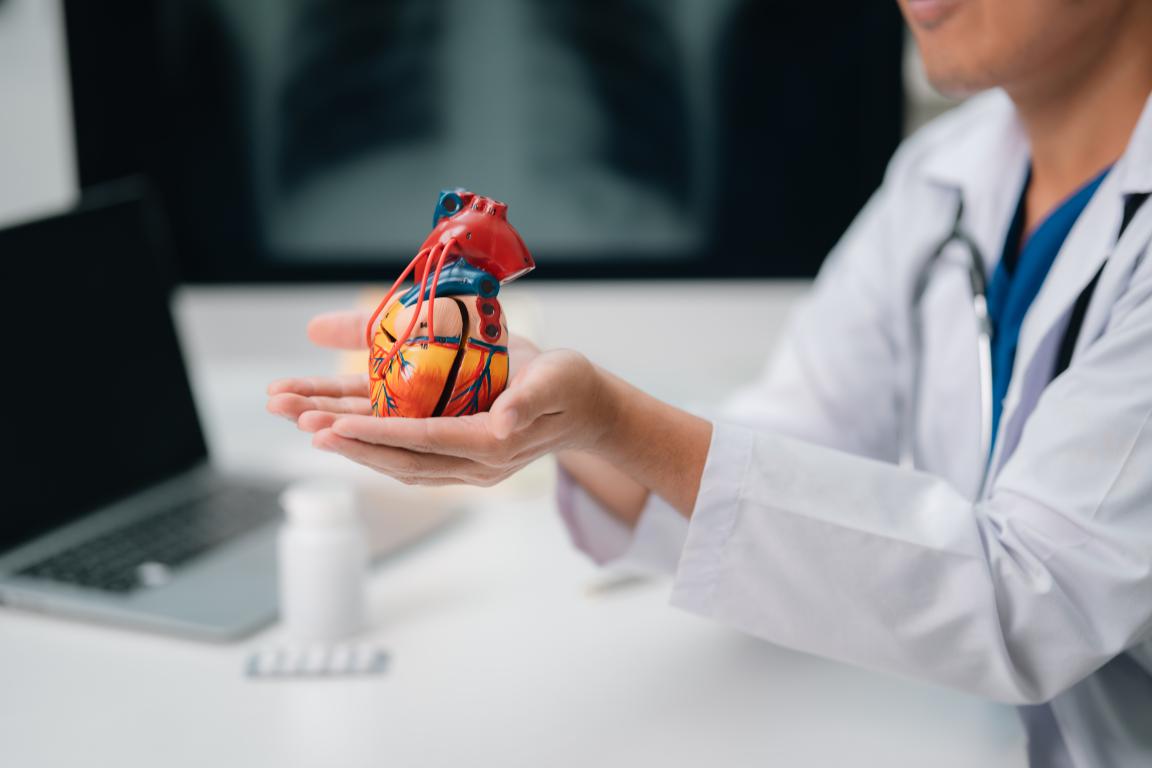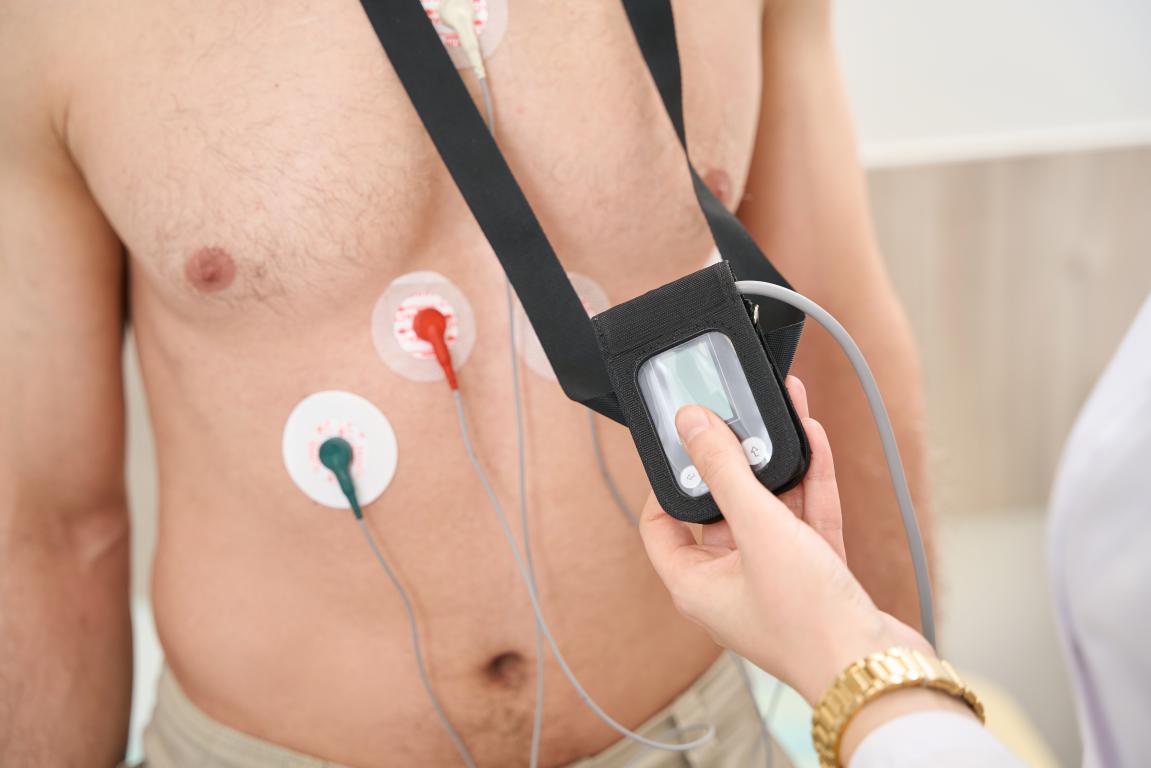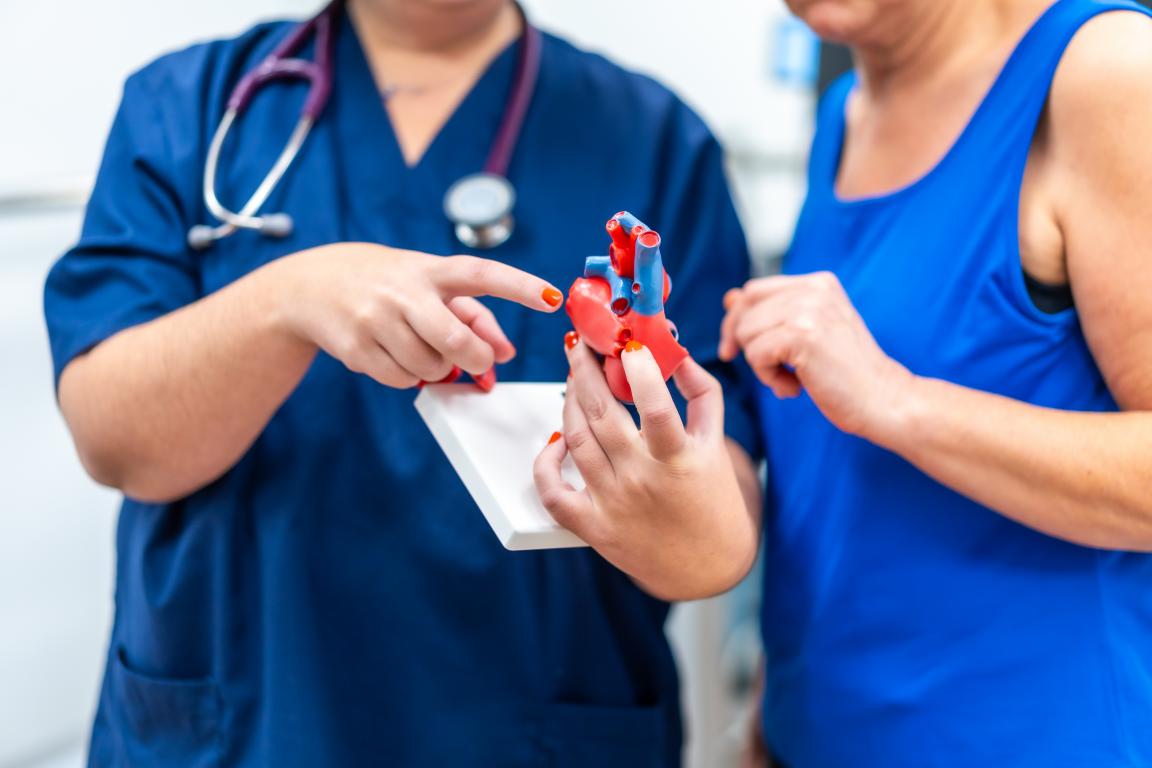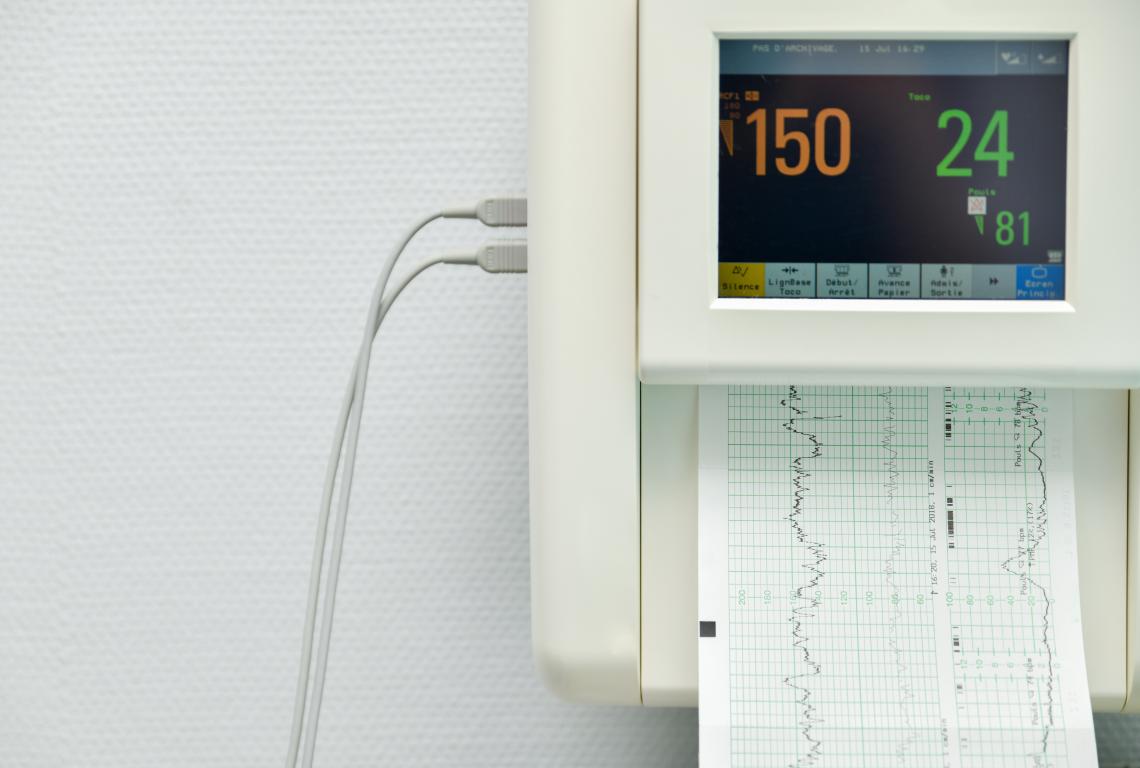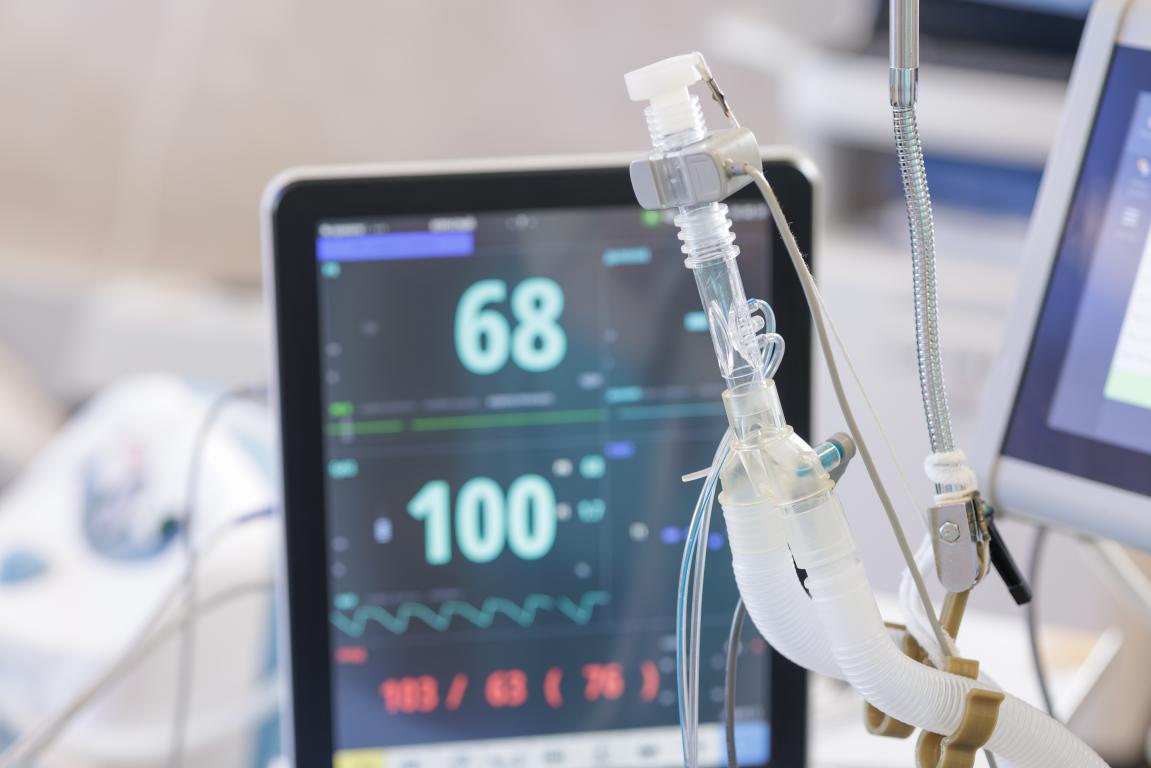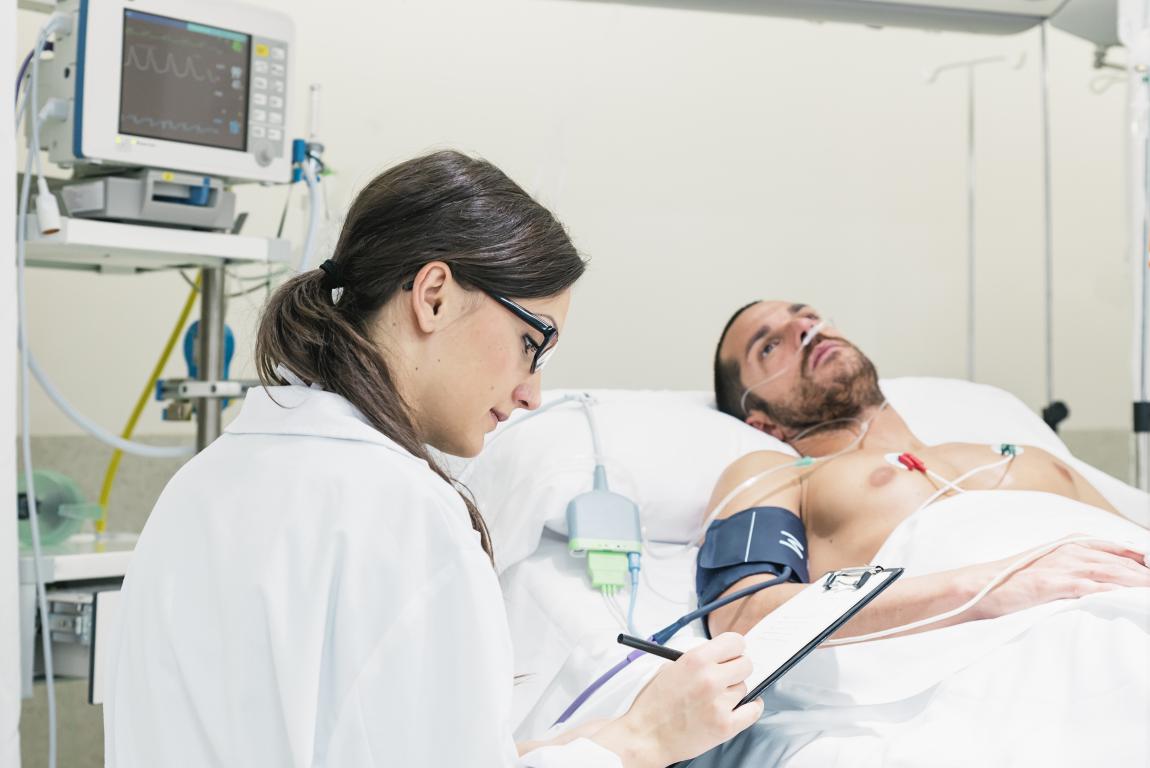Understanding Your ICD: A Comprehensive Guide for New Patients
Being told you need an Implantable Cardioverter Defibrillator, or ICD, can bring a whole range of emotions. It's perfectly normal to feel a bit overwhelmed, perhaps a little anxious, and maybe even have lots of questions swirling around in your head. You might be wondering what an ICD is, how it works, and what it means for your everyday life. Please know that you're not alone in these feelings.
Here at The Card Project UK, we understand that getting to grips with a new medical device can be a lot to take in. That's why we've put together this comprehensive guide – to walk you through everything you need to know about your ICD in a way that's clear, helpful, and easy to understand. We're here to explain the ins and outs, answer your most pressing questions, and help you feel more confident and prepared for life with your new device. Our aim is to give you all the information you need right here, so you don't have to search anywhere else.
Table of Contents:
What Exactly is an ICD and Why Do I Need One?
Let's start with the basics: what an ICD actually is. An ICD stands for Implantable Cardioverter Defibrillator. In simple terms, it's a small, battery-powered device that's placed inside your body, usually just under your collarbone. Its main job is to continuously monitor your heart's rhythm and, if it detects a dangerously fast or irregular heartbeat, deliver an electrical shock to correct it. Think of it as a tiny, personal paramedic that's always on duty, ready to help your heart when it needs it most.
The Purpose of an ICD: Your Heart's Guardian
Why would someone need an ICD? Well, it's prescribed for people who are at risk of life-threatening heart rhythm problems, known as arrhythmias. These aren't just any irregular heartbeats; these are specific types of very fast rhythms, like ventricular tachycardia or ventricular fibrillation, that can make your heart beat so quickly and chaotically that it can't pump blood effectively to your brain and other organs. If these aren't stopped quickly, they can lead to fainting, collapse, or even sudden cardiac arrest.
The ICD acts as a crucial safety net. It's not designed to prevent these arrhythmias from happening, but rather to detect them and treat them immediately if they do occur. This rapid response is vital because these dangerous rhythms can be life-threatening. By quickly restoring a normal heart rhythm, the ICD can prevent serious complications and effectively save your life. It's an incredible piece of technology that offers peace of mind for both you and your loved ones, knowing that you have this protection working for you 24/7.
Understanding Heart Arrhythmias and Your Risk
To fully understand why an ICD is so important, it helps to know a little more about heart arrhythmias. Your heart has its own electrical system that controls how it beats. Normally, electrical signals start in a specific part of your heart (the sinus node) and spread in an organised way, making your heart chambers contract and relax in a coordinated rhythm. An arrhythmia happens when there's a problem with this electrical system, causing your heart to beat too fast, too slow, or irregularly.
While many arrhythmias are harmless, the ones that ICDs protect against are serious. Ventricular tachycardia (VT) is when the lower chambers of your heart (ventricles) beat very rapidly. Ventricular fibrillation (VF) is even more dangerous; it's when the ventricles just quiver instead of pumping blood, leading to a complete loss of circulation. Conditions that can put you at risk for these severe arrhythmias include:
-
Previous heart attack: Damage to heart muscle can create areas that disrupt electrical signals.
-
Heart failure: A weakened heart muscle is more prone to irregular rhythms.
-
Cardiomyopathy: Diseases of the heart muscle that affect its structure and function.
-
Long QT syndrome or Brugada syndrome: Genetic conditions that affect the heart's electrical activity.
-
Survival of a sudden cardiac arrest: If you've had one before, an ICD can prevent another.
Your doctor will have carefully assessed your specific heart condition and your risk factors before recommending an ICD. It's a decision based on your individual medical needs, aimed at protecting you from potentially fatal heart events. While it might feel like a big step, it's a proactive measure designed to keep you safe and extend your life.
The Difference Between an ICD and a Pacemaker
It's common for people to confuse ICDs with pacemakers, and it's easy to see why – they are both small, implanted heart devices. However, they have distinct primary functions, even though modern ICDs often have pacemaker capabilities built in.
A pacemaker's main job is to treat heart rhythms that are too slow (bradycardia). If your heart isn't beating fast enough, a pacemaker sends out tiny electrical pulses to stimulate it, ensuring it maintains a healthy minimum heart rate. It essentially "paces" your heart to keep it from going too slow.
An ICD's primary role, as we've discussed, is to monitor for and stop dangerously fast, life-threatening arrhythmias (tachycardia or fibrillation). While an ICD also monitors your heart rate and can act like a pacemaker if your heart rate drops too low, its defining feature is its ability to deliver a larger electrical shock (defibrillation or cardioversion) to reset a dangerously fast rhythm.
So, while both devices use electrical impulses to help your heart, the ICD is the 'big gun' for rapid, life-threatening rhythms, offering both anti-tachycardia pacing (small, fast pulses to try and correct a fast rhythm gently) and defibrillation (a stronger shock). Many ICDs are actually dual-purpose devices, combining the functions of both a pacemaker and a defibrillator. This means if your heart goes too slow, it can pace it, and if it goes dangerously fast, it can deliver a shock. Your medical team will explain the specific functions of your particular device.
How Does an ICD Work? Understanding the Technology Inside You
It's fascinating to understand the clever technology packed into such a small device. Your ICD is a sophisticated piece of equipment that's constantly working to protect your heart. It’s made up of two main parts: the pulse generator and the leads (sometimes called wires).
The Pulse Generator: The Brain of Your ICD
The pulse generator is the actual 'box' of the ICD. This is the part that's implanted under your skin, usually in your chest. It's relatively small, about the size of a small pocket watch or a matchbox. Inside this casing, it holds the battery and a tiny computer.
-
The Battery: The battery is specially designed for longevity, usually lasting between 5 to 10 years, sometimes even longer, depending on how often the device needs to deliver therapy. It's a powerful battery, capable of delivering the necessary energy for shocks. Don't worry, your doctor will regularly check the battery life during your follow-up appointments, and when it starts to get low, you'll be scheduled for a procedure to replace just the pulse generator, not the leads.
-
The Computer (Microprocessor): This is the 'brain' of the ICD. It's programmed by your heart specialist (cardiologist or electrophysiologist) to recognise specific dangerous heart rhythms. It constantly receives information about your heart's electrical activity through the leads. The computer analyses this information in real-time, looking for patterns that match the dangerous arrhythmias it's been programmed to detect. If it identifies one, it then decides on the appropriate therapy to deliver.
This combination of a long-lasting power source and a smart computer means your ICD is always monitoring, always ready, and always making intelligent decisions about your heart's rhythm. It's a truly remarkable feat of engineering designed specifically for your safety.
The Leads: Your ICD's Eyes and Hands
The leads are thin, insulated wires that connect the pulse generator to your heart. These are absolutely crucial to the ICD's operation, as they perform a dual role:
-
Sensing (The Eyes): The leads have tiny electrodes at their tips that rest against the inside wall of your heart. These electrodes pick up your heart's natural electrical signals. These signals are then transmitted back along the leads to the pulse generator's computer, allowing the ICD to continuously "see" what your heart is doing. This constant monitoring is how the ICD knows if your heart rhythm is normal or if it's developing a dangerous arrhythmia.
-
Delivering Therapy (The Hands): If the ICD's computer detects a life-threatening rhythm, the same leads are used to deliver the necessary electrical therapy directly to your heart. This therapy can come in a few forms, which we'll discuss in more detail next. The leads are carefully threaded through a vein, usually under your collarbone, and then guided into the appropriate chambers of your heart by the doctor during the implantation procedure. They are designed to be flexible yet durable, and once in place, they become a permanent part of your internal electrical system.
The number of leads you have depends on your specific heart condition and the type of ICD you receive. Some people might have one lead, others two, and some may have three (for certain types of heart failure where cardiac resynchronisation therapy, or CRT, is also needed). Your doctor will explain exactly how many leads are being used and why they are placed in particular areas of your heart.
The Different Therapies Your ICD Can Deliver
When your ICD detects a dangerous heart rhythm, it has a range of 'tools' it can use to try and correct it. These are collectively known as therapies, and the device is programmed to deliver the most appropriate one based on the detected arrhythmia.
1. Anti-Tachycardia Pacing (ATP)
This is often the first line of defence for fast heart rhythms that aren't immediately life-threatening. If your heart starts beating too fast but is still somewhat organised, the ICD can deliver a series of very rapid, small electrical pulses – much faster than your own heart is beating – to try and interrupt the abnormal rhythm and reset it to a normal pace.
-
How it feels: Many people don't feel ATP at all, or they might describe it as a fluttering sensation or a mild thump in their chest. It's designed to be a gentle intervention if possible, avoiding the need for a shock.
-
Why it's used: ATP is effective for many episodes of ventricular tachycardia, particularly if the rhythm is not extremely fast. It's a way for the ICD to try and correct the rhythm without needing a stronger, more noticeable therapy.
2. Cardioversion
If ATP isn't successful in stopping a fast, organised but dangerous rhythm, or if the rhythm is already very fast and potentially unstable, the ICD might deliver a low-energy electrical shock. This is known as cardioversion.
-
How it feels: A cardioversion shock is more noticeable than ATP. People often describe it as a sudden jolt or a strong thump in the chest. It's definitely something you'd be aware of, but it's typically less intense than a defibrillation shock.
-
Why it's used: It's used for rhythms like ventricular tachycardia that are too fast or unstable for ATP, but not yet completely chaotic like ventricular fibrillation. The goal is to synchronise the heart's electrical activity and restore a normal rhythm.
3. Defibrillation
This is the most powerful therapy your ICD can deliver and is reserved for the most dangerous, life-threatening rhythms, especially ventricular fibrillation. In VF, the heart isn't beating; it's just quivering inefficiently. A defibrillation shock is a higher-energy electrical pulse designed to instantly 'reset' the entire heart's electrical system, much like rebooting a computer, allowing it to restart in a normal rhythm.
-
How it feels: A defibrillation shock is a very strong and sudden jolt. People often describe it as feeling like being kicked in the chest by a horse, or a sudden, forceful blow. It can be painful and frightening, but it's important to remember that it's delivered because your heart rhythm was life-threatening and the shock was essential to save your life.
-
Why it's used: It's the most effective way to stop ventricular fibrillation and restore a pumping heart rhythm, preventing sudden cardiac arrest.
It's natural to be a bit apprehensive about the idea of receiving a shock. Your doctors will program your ICD to deliver therapies only when absolutely necessary. The aim is always to use the least amount of energy possible to correct the rhythm. Many people with ICDs go years without ever receiving a shock, while others may receive them. Each shock means the device has done its job and protected you from a potentially fatal event. If you do receive a shock, or multiple shocks, it's very important to contact your medical team straight away.
The ICD Implantation Procedure: What to Expect
The idea of having a medical device implanted can be daunting, but understanding the process can help ease any worries you might have. The ICD implantation procedure is a routine surgery performed by a heart specialist, usually an electrophysiologist, and it's generally a safe and straightforward procedure.
Before the Procedure: Preparation and What to Ask
In the days or weeks leading up to your ICD implantation, you'll have several appointments and discussions with your medical team. This is a vital time for preparation and getting all your questions answered.
-
Pre-operative assessments: You'll likely have some tests to ensure you're fit for the procedure. These might include blood tests, an ECG (electrocardiogram) to check your heart's electrical activity, and possibly a chest X-ray.
-
Medication review: Your doctor or nurse will go through all the medications you're currently taking. You might be asked to stop certain medications, especially blood thinners, for a few days before the procedure to reduce the risk of bleeding. Always follow their instructions carefully.
-
Fasting instructions: You'll be given clear instructions on when to stop eating and drinking before your procedure. This is usually for several hours beforehand and is important for your safety during anaesthesia.
-
What to wear and bring: You'll be asked to wear comfortable clothing to the hospital. Leave valuables at home, as you'll need to remove jewellery and any piercings.
-
Asking questions: This is your opportunity to voice any concerns. Don't hesitate to ask your medical team about anything that's on your mind, no matter how small it seems. Here are some questions you might want to consider:
-
How long will the procedure take?
-
What type of anaesthesia will I have?
-
What are the potential risks and complications?
-
How long will I be in the hospital?
-
What kind of pain relief will I get afterwards?
-
What are the restrictions on activity immediately after the procedure?
-
When can I expect to go home?
Having a clear understanding of what's going to happen can significantly reduce anxiety. It's also a good idea to arrange for someone to take you home from the hospital, as you won't be able to drive after the procedure.
During the Procedure: The Implantation Process
The ICD implantation is typically performed in a hospital's cardiac catheterisation lab or an operating theatre. It usually takes between 1 to 3 hours, but this can vary.
-
Anaesthesia: Most ICD implantations are done under a local anaesthetic with sedation. This means the area where the ICD will be implanted is numbed, so you won't feel any pain there, but you'll also be given medication to help you relax and feel drowsy. You'll be awake but won't feel discomfort and likely won't remember much of the procedure. In some cases, a general anaesthetic may be used, meaning you'll be completely asleep. Your team will discuss this with you beforehand.
-
The incision: Once you're comfortable, the doctor will make a small incision (usually about 5-10 cm long) in your chest, typically just below your left collarbone (though sometimes on the right). This is where the ICD pulse generator will be placed, creating a small 'pocket' under your skin or muscle.
-
Lead insertion: The most intricate part of the procedure involves placing the leads. The doctor will identify a large vein under your collarbone and carefully thread the lead or leads through this vein, guiding them into the appropriate chambers of your heart. They'll use X-ray imaging (fluoroscopy) to visualise the heart and ensure the leads are positioned correctly and securely.
-
Testing the leads: Once the leads are in place, they are tested to ensure they can accurately sense your heart's electrical activity and can deliver therapy effectively. This testing involves measuring electrical signals and sometimes delivering very small, brief electrical pulses to check that the heart responds as expected.
-
Connecting the ICD: After the leads are confirmed to be working well, they are connected to the pulse generator. The pulse generator is then carefully placed into the pocket created under your skin.
-
Closing the incision: Finally, the doctor will close the incision with stitches or surgical glue. A sterile dressing will be applied to protect the wound.
Throughout the procedure, your heart rate, blood pressure, and oxygen levels will be closely monitored by the medical team to ensure your safety and comfort. You might hear some beeping noises from the equipment, but these are normal and part of the monitoring process.
After the Procedure: Recovery in Hospital
Once your ICD has been successfully implanted, you'll be taken to a recovery area.
-
Monitoring: You'll be closely monitored for several hours, or overnight, to ensure there are no immediate complications. Your heart rhythm will be continuously checked, and the wound site will be observed for any signs of bleeding or swelling.
-
Pain management: You might feel some discomfort or soreness around the incision site. This is normal, and you'll be offered pain relief to manage it.
-
Restrictions: You'll be asked to keep your arm on the side of the implant still for a period, often for the first 24 hours, to help the leads settle in. You'll also be advised not to lift your arm above your shoulder on the operated side for a few weeks to prevent dislodging the leads.
-
First device check: Before you go home, your medical team will perform a first 'device check'. This involves using a special programmer (a computer that communicates wirelessly with your ICD) to ensure the device is working correctly and that the settings are optimised for you. This is non-invasive and painless.
-
Going home: Most people are able to go home within 24-48 hours after the procedure, depending on their recovery and the hospital's protocols. You'll receive detailed discharge instructions, including information on wound care, activity restrictions, and when to schedule your first follow-up appointment.
It's completely normal to feel tired for a few days after the procedure. Rest is important, and make sure to follow all the instructions given by your medical team to ensure a smooth recovery.
Life with an ICD: Adjusting and Thriving
Having an ICD is a significant change, but it's one that can empower you to live a full and active life with greater security. Adjusting to life with your device involves understanding how it fits into your daily routine and learning to listen to your body.
Early Recovery at Home: The First Few Weeks
The first few weeks after returning home are crucial for a good recovery. You'll need to balance rest with gradually increasing your activity levels, always following your medical team's advice.
-
Wound care: Keep the incision site clean and dry. You'll be given specific instructions on how to care for your wound, including when you can shower or bathe. Watch out for any signs of infection, such as increased redness, swelling, warmth, pus, or fever, and report them to your doctor immediately.
-
Pain and discomfort: It's normal to experience some bruising, swelling, and soreness around the incision site. This should gradually improve over a few weeks. Continue to take any prescribed pain relief as needed.
-
Activity restrictions: You'll be advised to avoid heavy lifting, strenuous activities, and raising your arm above your shoulder on the side of the implant for typically 4 to 6 weeks. This is very important to allow the leads to properly 'embed' in your heart tissue and prevent them from moving out of place. Your doctor will tell you exactly what you can and can't do. Gentle walking is usually encouraged to promote circulation.
-
Sleeping: You might find it more comfortable to sleep on your back or on the opposite side of your implant for a while.
-
Driving: There are specific driving restrictions after an ICD implant, which vary depending on your underlying heart condition and whether you've previously received a shock. In the UK, you must not drive for at least one month after implantation. If you have an ICD for primary prevention (meaning you haven't had a life-threatening arrhythmia before), you may resume driving after one month, provided there have been no complications and your heart condition is stable. If your ICD was implanted for secondary prevention (meaning you've had a life-threatening arrhythmia that caused symptoms), the restrictions are usually longer, often 6 months. It's crucial to check the specific guidelines from the DVLA (Driver and Vehicle Licensing Agency) and discuss them with your doctor, as individual circumstances can affect these rules. You must inform the DVLA about your ICD.
Understanding Your Follow-Up Care
Regular follow-up appointments are a fundamental part of living with an ICD. These appointments allow your medical team to monitor your device and your heart health.
-
Device checks: Your ICD will be checked regularly, usually every 3 to 6 months, though the frequency can vary based on your specific needs. These checks are non-invasive and involve using a special 'programmer' that communicates wirelessly with your ICD. The programmer can read information from your device, such as battery life, lead integrity, how often your heart rhythm has changed, and whether the ICD has delivered any therapy (even if you didn't feel it). The team can also adjust the device settings if needed.
-
Remote monitoring: Many modern ICDs offer remote monitoring capabilities. This means your device can transmit data from your home directly to your clinic via a small bedside monitor. This allows your medical team to keep an eye on your heart rhythm and ICD function between your in-person appointments, providing an extra layer of reassurance and allowing for earlier detection of any issues. You'll be given instructions on how to set up and use a remote monitor if it's right for you.
-
Medication review: Your cardiologist will also review your medications at these appointments, making any adjustments necessary to support your heart health.
-
Lifestyle advice: These appointments are also a good opportunity to discuss any lifestyle changes or concerns you have, and to get advice on exercise, diet, and managing your overall health.
These regular check-ups are vital to ensure your ICD is working optimally and providing the best protection for you. They are a partnership between you and your healthcare team, aimed at keeping you healthy.
Emotional Adjustment and Support
Receiving an ICD can have a significant emotional impact, and it's important to acknowledge and address these feelings. It's not just a physical adjustment; it's an emotional one too.
-
Common feelings: You might experience a range of emotions, including relief and gratitude (knowing you're protected), but also anxiety, fear (especially about receiving a shock), frustration, anger, or even sadness. You might worry about your future, your independence, or how the ICD will affect your relationships. All these feelings are completely normal.
-
Coping strategies:
-
Talk about it: Don't keep your feelings bottled up. Talk to your family, friends, or a trusted healthcare professional.
-
Educate yourself: Learning as much as you can about your ICD, like through this guide, can help reduce fear of the unknown.
-
Connect with others: Finding support groups, either online or in person, where you can connect with other people who have an ICD can be incredibly helpful. Sharing experiences and advice can provide a sense of community and understanding. Your cardiac rehabilitation team or heart charity may be able to direct you to local groups.
-
Mindfulness and relaxation: Techniques like deep breathing, meditation, or gentle yoga can help manage anxiety.
-
Cardiac rehabilitation: Many hospitals offer cardiac rehab programmes. These are excellent for helping you regain physical fitness, but they also provide emotional support and education about living with a heart condition.
-
Professional support: If you find yourself struggling with persistent anxiety, depression, or fear, don't hesitate to seek professional help. A counsellor, psychologist, or a specialist cardiac nurse can provide strategies and support to help you cope.
Remember, accepting an ICD is a journey, and it's okay to have ups and downs. Be kind to yourself, and reach out for support when you need it. You're not expected to go through this alone.
Living Safely with Your ICD: Everyday Considerations
Having an ICD means you'll need to be aware of certain considerations in your daily life, particularly regarding electromagnetic interference. While ICDs are designed to be very resilient, some strong electromagnetic fields can temporarily affect their function. Knowing what to be cautious of will help you live confidently and safely.
Electromagnetic Interference (EMI): What You Need to Know
Electromagnetic interference (EMI) occurs when electrical currents or magnetic fields from external sources disrupt the normal function of your ICD. While modern ICDs are very well shielded, it's still wise to be aware of potential sources of strong EMI.
Devices to Use with Caution or Avoid
-
Mobile phones and other wireless communication devices: It's generally safe to use mobile phones, but it's recommended to hold your phone to the ear on the opposite side of your ICD implant. Avoid carrying your phone in a shirt pocket directly over your ICD. Keep it at least 6 inches (about 15 cm) away from your device.
-
Household appliances: Most common household appliances like microwaves, toasters, blenders, washing machines, and televisions are perfectly safe to use. Just make sure they are in good working order and properly earthed. Avoid leaning directly over a running appliance for prolonged periods.
-
Power tools and workshop equipment: Tools with electric motors like drills, electric saws, grinders, and welding equipment can generate strong electromagnetic fields. It's often best to avoid using these, or at least maintain a significant distance. If you need to use them for work or hobbies, talk to your doctor about specific precautions or if your device requires a special programme setting.
-
Magnets: Strong magnets can temporarily switch off your ICD's shock therapy function. Keep magnets at least 6 inches (15 cm) away from your ICD. This includes magnetic jewellery, magnetic mattress pads, and some newer tablet covers that have strong magnets.
-
Metal detectors and security systems:
-
Airport security scanners (walk-through archways): You should walk through these at a normal pace and avoid lingering. They are generally safe, but you might want to inform security personnel that you have an ICD.
-
Handheld metal detector wands: These wands contain magnets and can temporarily interfere with your ICD if held directly over it. Ask security staff to avoid holding the wand over your ICD site or request a manual pat-down instead.
-
Electronic article surveillance (EAS) systems (shop security gates): Walk through these at a normal pace and avoid leaning on them.
-
Medical procedures and equipment:
-
MRI scans: Magnetic Resonance Imaging (MRI) machines use very powerful magnets. Traditionally, having an ICD meant you couldn't have an MRI. However, many newer ICD models are now 'MRI-conditional', meaning they are designed to be safe under specific MRI conditions. If your ICD is MRI-conditional, you must inform the MRI staff, as your device will need to be temporarily reprogrammed before and after the scan. Always check with your cardiologist.
-
Diathermy: This uses high-frequency electrical current for heating tissue. It's strictly contraindicated for people with ICDs.
-
Electrocautery: Used in surgery. The surgical team needs to be aware of your ICD so they can take precautions to minimise interference.
-
Radiation therapy: Used for cancer treatment. Your radiologist and cardiologist need to coordinate treatment to ensure your ICD is protected.
-
Lithotripsy (shock wave therapy): Used to break up kidney stones. Can interfere with ICDs.
-
TENS (Transcutaneous Electrical Nerve Stimulation) machines: Used for pain relief. Should be used with caution and not placed over or near the ICD. Discuss with your doctor.
General Rule: If you are unsure about a device or a situation, err on the side of caution. Keep the device away from your ICD site, or discuss it with your cardiologist. Always inform any healthcare professional (dentist, physio, other specialists) that you have an ICD before they perform any procedure or use any equipment on you.
What to Do If You Receive a Shock
Receiving a shock from your ICD can be a frightening experience, even though it means your device has done its job. Knowing what to do can help you manage the situation.
-
One shock and you feel well: If you receive a single shock and you feel fine afterwards (no symptoms like dizziness, chest pain, or fainting), you should contact your cardiology clinic or ICD team as soon as possible, within 24 hours. They will likely want to check your device to see what rhythm triggered the shock and ensure everything is working correctly.
-
One shock and you don't feel well: If you receive a single shock and you feel unwell (e.g., dizzy, faint, chest pain, shortness of breath), or if you faint, you should seek immediate medical attention. Call for an ambulance (999 in the UK) or have someone take you to the nearest A&E department.
-
Multiple shocks: If you receive more than one shock within a short period (e.g., 2 or more within 24 hours), or if you receive a shock and then feel another shock coming, this is considered a 'storm' and requires immediate medical attention. Call for an ambulance (999 in the UK) straight away.
-
What to tell others: If someone is with you when you receive a shock, they should know not to touch you during the shock. While they might feel a slight tingle if they are touching you, it's not dangerous to them. Their main role is to stay calm, help you, and call for help if needed.
Remember, a shock means your ICD has intervened to protect you from a life-threatening event. It's doing its job. However, it's crucial to report all shocks to your medical team so they can investigate the cause and adjust your treatment or device settings if necessary.
Travel and Your ICD
Having an ICD shouldn't stop you from travelling and enjoying new experiences, but there are a few things to keep in mind.
-
Security at airports: As mentioned, airport security scanners are generally safe, but you should inform security staff that you have an ICD. You can show them your manufacturer's ID card or a doctor's letter confirming your device. Request a pat-down instead of using a handheld wand over your device.
-
Medical ID: Always carry your ICD identification card, which you'll receive from the manufacturer or your clinic.
-
Medication: Carry all your regular medications in your hand luggage with original labels and a copy of your prescriptions.
-
Insurance: Ensure your travel insurance policy covers your pre-existing heart condition and your ICD. This is crucial for peace of mind, especially if you need medical assistance abroad.
-
Contact information: Keep your cardiologist's contact information readily available. It's also a good idea to know the emergency medical number for the country you're visiting.
-
Activity levels: Be mindful of your activity restrictions, especially if you're travelling soon after your implant. If flying long-haul, discuss this with your doctor, as prolonged sitting can increase the risk of blood clots.
-
Time zones: If you take medications at specific times, discuss with your doctor or pharmacist how to adjust your medication schedule for different time zones.
With a little planning, you can travel safely and comfortably with your ICD.
Supporting Your Journey with an ICD
We hope this comprehensive guide has provided you with valuable information and a clearer understanding of your Implantable Cardioverter Defibrillator. Living with an ICD is a significant step, and being well-informed is one of the best ways to navigate this journey with confidence and peace of mind. We understand that preparedness is a key part of managing a medical condition, and having easily accessible information about your health is a vital component of that. For those moments when clear, immediate information about your ICD is needed, having a dedicated medical ID can be incredibly helpful. You can find more information and explore options for various medical ID cards that can support your specific needs by visiting our ICD Medical ID Card Category.
© 2024 The Card Project Uk Ltd
VAT: 453 2087 06
|
